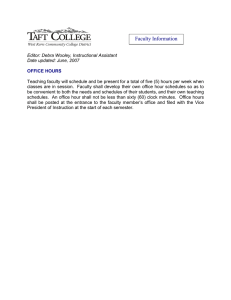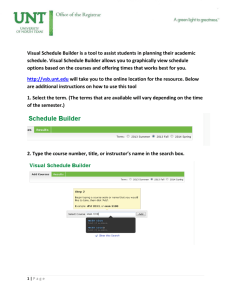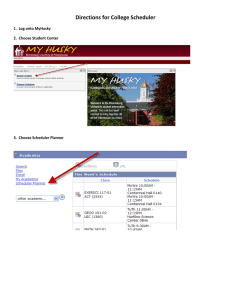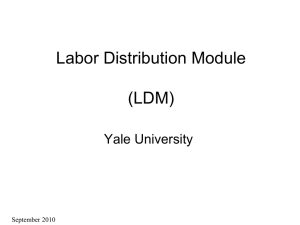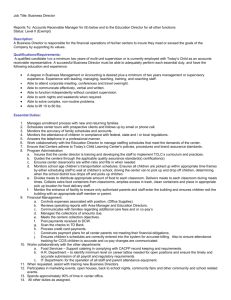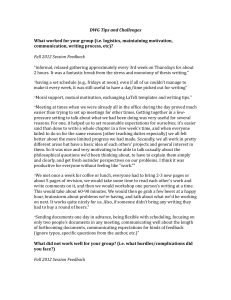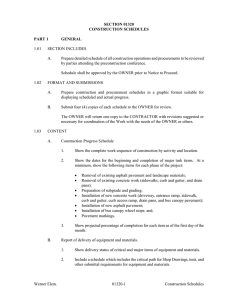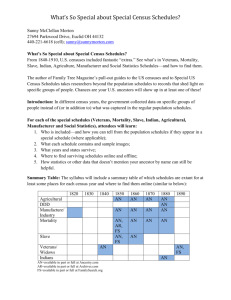this document
advertisement
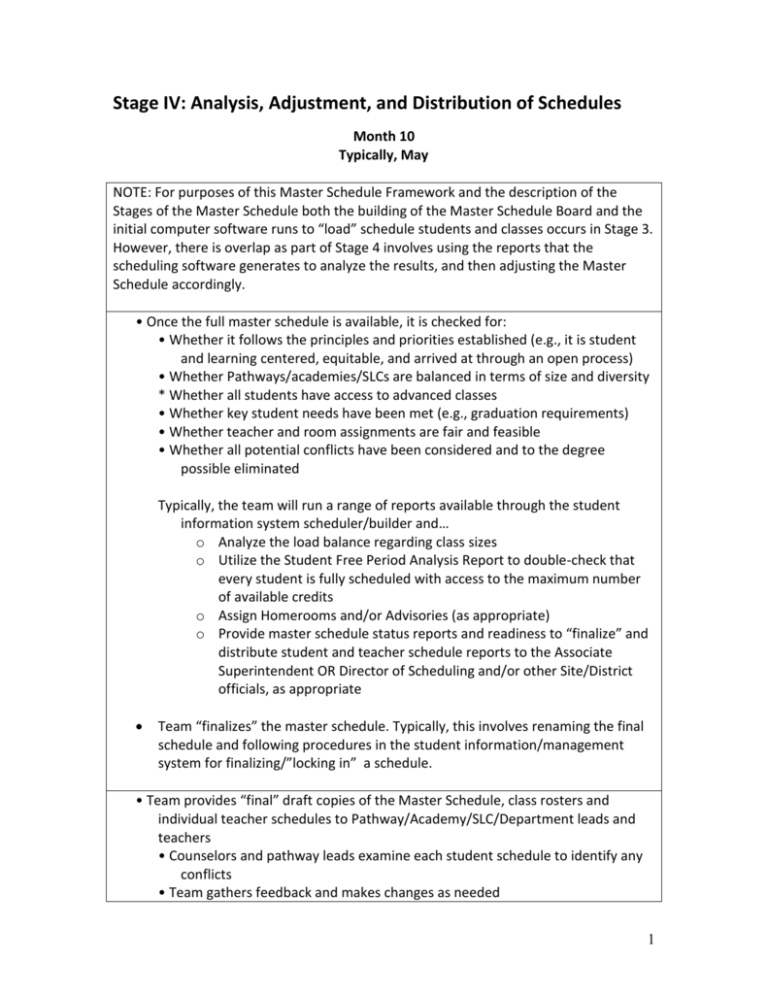
Stage IV: Analysis, Adjustment, and Distribution of Schedules Month 10 Typically, May NOTE: For purposes of this Master Schedule Framework and the description of the Stages of the Master Schedule both the building of the Master Schedule Board and the initial computer software runs to “load” schedule students and classes occurs in Stage 3. However, there is overlap as part of Stage 4 involves using the reports that the scheduling software generates to analyze the results, and then adjusting the Master Schedule accordingly. • Once the full master schedule is available, it is checked for: • Whether it follows the principles and priorities established (e.g., it is student and learning centered, equitable, and arrived at through an open process) • Whether Pathways/academies/SLCs are balanced in terms of size and diversity * Whether all students have access to advanced classes • Whether key student needs have been met (e.g., graduation requirements) • Whether teacher and room assignments are fair and feasible • Whether all potential conflicts have been considered and to the degree possible eliminated Typically, the team will run a range of reports available through the student information system scheduler/builder and… o Analyze the load balance regarding class sizes o Utilize the Student Free Period Analysis Report to double-check that every student is fully scheduled with access to the maximum number of available credits o Assign Homerooms and/or Advisories (as appropriate) o Provide master schedule status reports and readiness to “finalize” and distribute student and teacher schedule reports to the Associate Superintendent OR Director of Scheduling and/or other Site/District officials, as appropriate Team “finalizes” the master schedule. Typically, this involves renaming the final schedule and following procedures in the student information/management system for finalizing/”locking in” a schedule. • Team provides “final” draft copies of the Master Schedule, class rosters and individual teacher schedules to Pathway/Academy/SLC/Department leads and teachers • Counselors and pathway leads examine each student schedule to identify any conflicts • Team gathers feedback and makes changes as needed 1 • In so far as is feasible, tentative schedule is provided before summer break • Tentative Class schedules are distributed to students and teachers Note: Some master schedule teams describe mailing copies of student schedules home in late Spring/early summer to allow for student/parent verification and so that any errors can be fixed before the end of the “old” school year or very early in the summer. • (As appropriate) Students are given notes encouraging participation in summer school * Students are provided reading lists and/or summer assignments for courses they will be taking in the new school year. Make additional adjustments End of school year adjustments These might include: * Student requests for changes after they have received their schedules. * Any Corrections for clerical errors. * Course changes related to grade reversals – (Typically, students were programmed based on grades in progress at mid-year. While final grades are not yet available, teacher “failure warning lists” may indicate that a student who was passing a foreign language course may no longer be passing. Or a student who failed a first term course may have made up her/his grade and is also now passing the second term course. * New Admissions (occurring late in the school year. A school feeder pattern may have changed and there may be a greater influx of incoming ninth graders. OR new Transfers/Discharges NOTE: In Stage 5: Fine-Tuning, Readjustment, and Assessment, these same tasks are repeated and re-repeated or “updated” both in the weeks before and after the end of the old school year and in the weeks before and after the start of the new school year. Tip from the Experts: Often master schedule teams talked about the need to leave some slots open in each of the pathways to allow opportunities for choice for students new to the school in the summer or fall. This resource was developed by the College and Career Academy Support Network at the Graduate School of Education, University of California. 2 Permission is granted for educational use with attribution. 3
